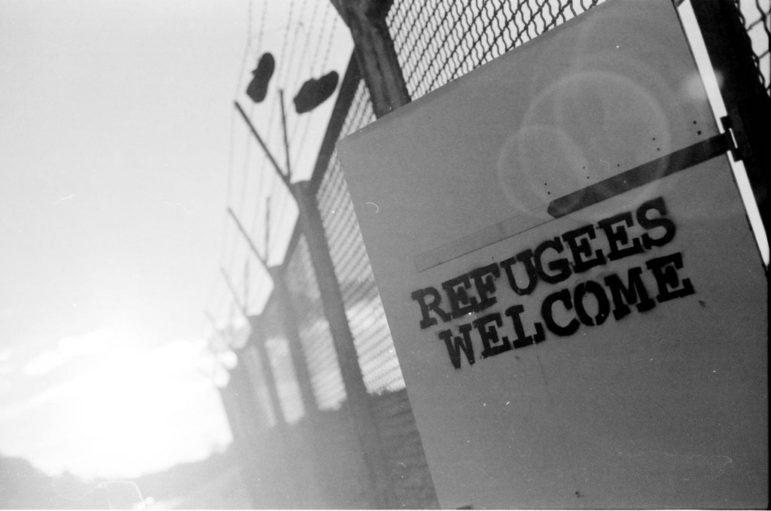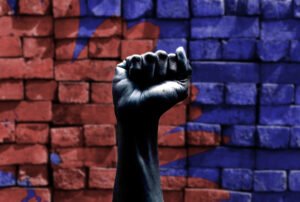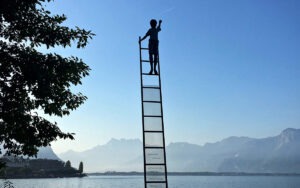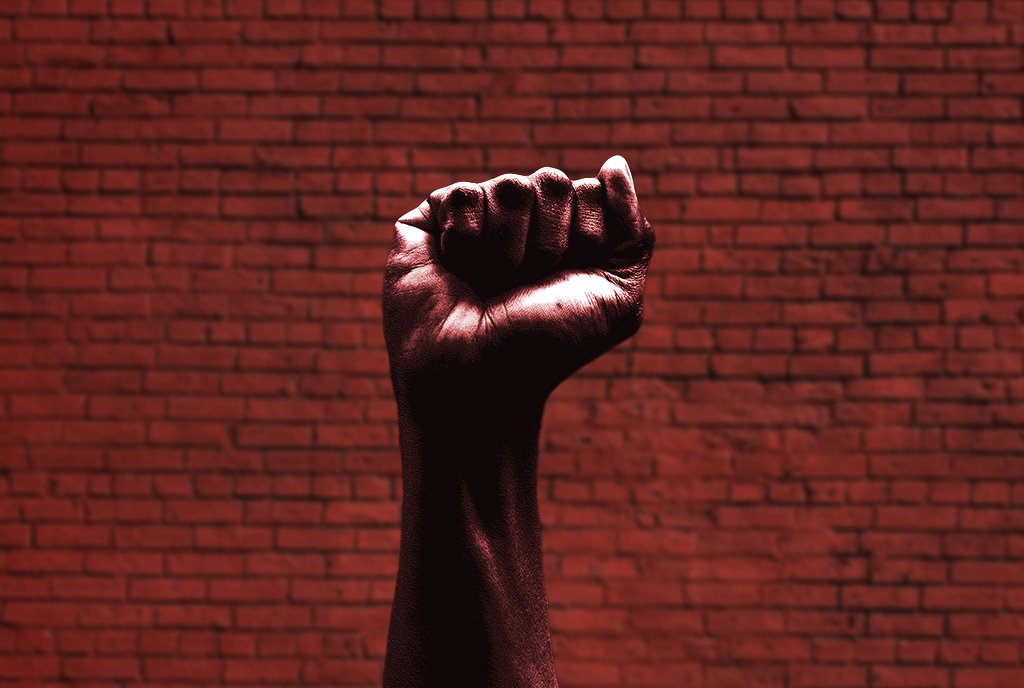
July 26, 2016; Thomson Reuters Foundation
After the disappointment experienced by immigration advocates in the wake of the Supreme Court’s deadlock on the expansion of deferred action programs for childhood arrivals and parents of Americans (DAPA and DACA+), an announcement by the Obama administration this week was a welcome step, however small, towards meeting the needs of asylum-seekers.
What the announcement lays out is a plan to expand the number of refugees from the so-called “Northern Triangle” countries (El Salvador, Honduras and Guatemala) who may legally enter the United States. It involves a series of measures designed to ensure the safety of those seeking asylum while addressing national security concerns in host countries. In a conference call announcing the changes, Amy Pope, a deputy homeland security advisor, said that current efforts are insufficient for addressing the number of individuals from these countries with legitimate refugee claims, and that the appropriate mechanisms don’t exist under which they can apply.
The plan is quite modest and, at best, will apply to only a few hundred individuals initially. Some will be allowed to apply for refugee status in their own countries. For those deemed too at risk to remain in their home countries while being processed by the Department of Homeland Security for possible resettlement, Costa Rica will serve as a temporary host for up to 200 applicants at a time. This is significant, as persuading countries to participate in the asylum and resettlement process has historically been difficult due to concerns about refugees stuck in transition and other bureaucratic obstructions. The United Nations High Commissioner for Refugees (UNHCR) has agreed to set up a process for determining who would be eligible for temporary humanitarian visas and how procedures are implemented.
According to Avideh Moussavian, policy attorney at the National Immigration Law Center:
While today’s announcement is a positive development, it does highlight a troubling hypocrisy on the part of the administration. On one hand, it is responding to the situation in Central America as an urgent humanitarian one for those currently living in the dangerous conditions of these countries. However, it continues to subject Central Americans fleeing those same perilous circumstances to punitive and terrifying enforcement tactics once they arrive at our borders seeking safe haven.
Since the surge in migration from Central America that occurred in 2014, 600 people have been admitted into the country as refugees, including 267 children under the Central American Minors program, set up for children with parents legally living in the U.S. The Department of Homeland Security cites 2,880 minors who have been approved under that program and are awaiting resettlement. To address the issue of children traveling alone, the program has been expanded, and will now allow siblings and qualified caregivers to apply for refugee status alongside the child.
According to the Council on Foreign Relations, El Salvador, Guatemala, and Honduras consistently rank among the most violent countries in the world with El Salvador, because of its gang-related violence, earning the distinction of “the most violent country not at war.”
In 2015, the Honduran newspaper La Prensa conducted an investigation which revealed that “Salvadorans and Hondurans pay an estimated $390 million and $200 million, respectively, in extortion fees to organized crime groups.” Sadly, the report found that these groups typically target small businesses, poor residents, and public transportation operators. In Guatamala, more than 400 transportation workers were killed in 2014.
Historically, organized crime is a legacy of the region’s decades of war. According to a background piece prepared by the Council on Foreign Relations:
In El Salvador, fighting between the military-led government and leftist guerrilla groups (1979–92) left as many as seventy-five thousand dead, and Guatemala’s civil war (1960–96) killed as many as two-hundred thousand civilians. Honduras did not have a civil war of its own, but nonetheless felt the effects of its neighbors’ conflicts; it served as a staging ground for U.S.-backed Contras, a right-wing rebel group fighting Nicaragua’s Sandinista government during the 1980s. Organized crime grew following these civil wars, particularly in El Salvador, where war produced “a large pool of demobilized and unemployed men with easy access to weapons,” according to [a previous] CFR report. In Guatemala, illegal armed groups and clandestine security apparatuses grew out of state intelligence and military forces.
Organized crime in the Northern Triangle includes transnational criminal organizations, many of which are associated with Mexican drug-trafficking organizations (DTOs); domestic organized-crime groups; transnational gangs, or maras, such as Mara Salvatrucha (MS-13) and the Eighteenth Street Gang (M-18); and pandillas, or street gangs.
In 2011, the World Bank declared that drug trafficking constitutes “the main single factor behind rising levels of violence in the region.” In addition, low tax revenues in these countries, combined with corruption, attempts at mass incarceration resulting in overcrowded prisons, and weak civil institutions, have undermined any attempts in the past several decades to address these issues. According to Cynthia Arnson and Eric Olson at the Woodrow Wilson International Center for Scholars, efforts to reform and professionalize police forces during the two countries’ peace processes were incomplete:
Sign up for our free newsletters
Subscribe to NPQ's newsletters to have our top stories delivered directly to your inbox.
By signing up, you agree to our privacy policy and terms of use, and to receive messages from NPQ and our partners.
There has been so much penetration of the state and so much criminal involvement in security forces, it makes it difficult to think about how they would [reform] without some outside intervention.
The U.S. gave more than a billion dollars to the region between 2008 and 2015, and in January of this year released a fact sheet reaffirming its commitment to the U.S. Strategy for Engagement in Central America, “a multiyear effort to assist the governments of Central America to build a safer and more prosperous future for their citizens, including through supporting governments to become more transparent, accountable, and capable of providing basic services and upholding the rule of law.” Obligations on the part of countries in the Northern Triangle include undertaking reforms in border security, government accountability, human rights, and the collection of government revenues.
Spelled out in the fact sheet are plans to expand access to the U.S. Refugee Admissions Program for vulnerable asylum seekers from the region, offering a legal alternative to entering the country through human smugglers. The intention is to enable the UNHCR and its regional partners to identify persons in need of protection and better address the needs of those threatened by gang violence as well as human rights defenders who have been targeted.
The Obama administration believes that a safe, stable, and prosperous Central America is vital in order to achieve a future where the Western Hemisphere is middle class, democratic, and secure.
Early this month, the Organization of American States (OAS) and UNHCR convened a gathering hosted by the government of Costa Rica, which brought together government representatives from around the region and officials from the UN, Inter-American Development Bank, World Bank and other humanitarian and development NGOs to discuss solutions to the growing crisis. The meeting coincided with the recent release of the annual Global Trends report by UNHCR, which showed that in 2015, 65.3 million people—one in every 113 people on the planet—were either seeking asylum, internally displaced in their own countries, or a refugee. This number constitutes the highest number in history, with an increase of 10 percent over last year alone.
As pointed out in the report, while much international attention has focused on refugees arriving in Europe, the number of refugees and asylum-seekers with pending cases from El Salvador, Guatemala and Honduras has increased by more than fivefold, from 20,900 people in 2012 to 109,800 people in 2015.
The takeaway from the OAS gathering was a series of comprehensive actions, including a provision of international protection for asylum-seekers and protection measures in the countries of origin. As the High Commissioner for Refugees, Filippo Grandi, points out in a video accompanying the UNHCR report, “Instead of developing asylum systems that are hospitable, that recognize the hardship and the difficulties and the reasons for people to flee, barriers are erected.”
This sentiment is echoed by Michelle Brané of the Women’s Refugee Commission and one of the nation’s foremost experts on immigration detention and reform. She applauded the administration’s announcement while pointing out its symbolic significance, particularly coming at a time when all eyes are on the southern border. “It’s a drop in the bucket,” she said, “but it’s a start.”
Pointing out that neighboring countries in the region are also feeling the effects of the problem, she noted, “Over the last five years, asylum applications in Costa Rica, Belize, Panama, and Nicaragua have risen dramatically, with all of those countries reporting huge increases in the number of arrivals. What’s good about this new approach is that it’s a sign that this is a major regional issue. It’s not what we would prefer in terms of numbers, but it starts to create another alternative that is safer and more orderly than border enforcement programs alone.”
When asked what she saw as hallmarks of a well-considered immigration reform program, Brané replied, “We need to approach it from all sides. We have to be realistic—we can’t deport everyone who is undocumented in this country. It’s simply not a sustainable solution. Border enforcement doesn’t mean you build a wall, it means you’ve got a system where you’re able to screen and funnel people in appropriately—or turn them away. For those here, we need a legalization program. And I’m completely in favor of one that makes people jump through hurdles, learning English, paying back taxes, taking all of the requisite steps. But we need to rethink and develop a system for how we’ll admit immigrants both now and in the future.”
According to Brané, the resettlement system already in place in this country (in 2015, the U.S. resettled nearly 70,000 refugees) is too often forgotten.
We have a wonderful system right now that uses the strength and resources of our government, private, faith-based, and volunteer sectors to place people and acclimate them to their new country. It’s a very successful model that other countries have always looked to, but it, too, needs sufficient resources and updates to survive.
While there have been positive signs of an emerging movement against the corruption and high-level criminality in Guatemala and Honduras—what the Economist and others have dubbed the “Central American Spring,” no one expects change to come quickly. In the meantime, the largest challenge in the US remains working across the political divide to craft a bipartisan solution for comprehensive immigration reform. As Brané puts it, “The system we have in place now is simply not meeting the demand of this country, or of the immigrants themselves. We wouldn’t have all these undocumented people working here if the system was working.”—Patricia Schaefer













